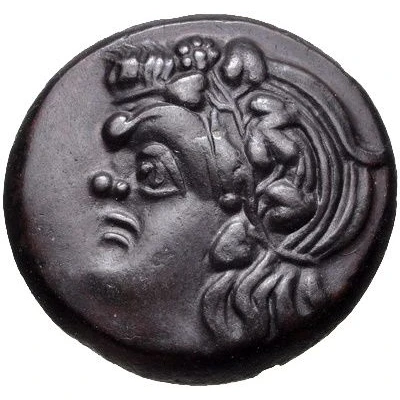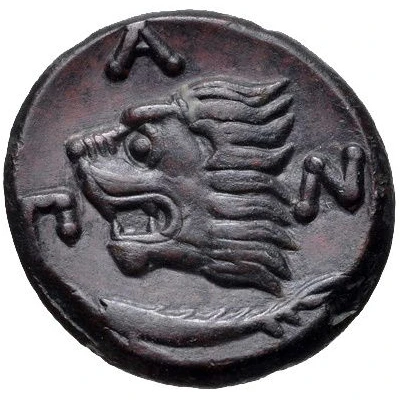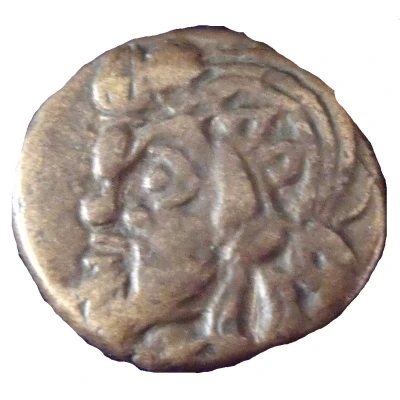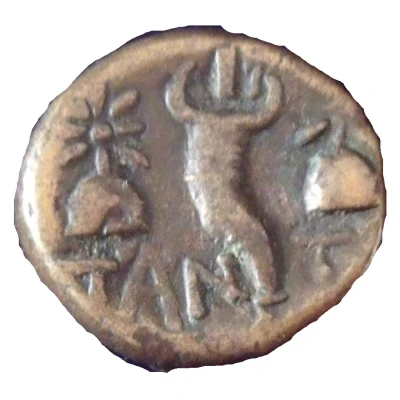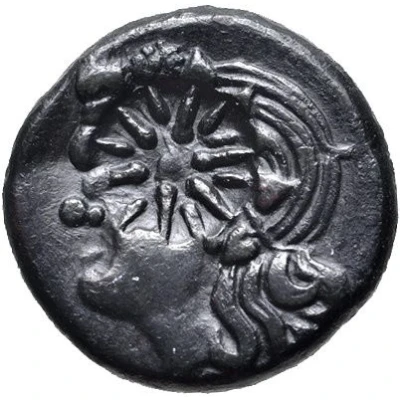
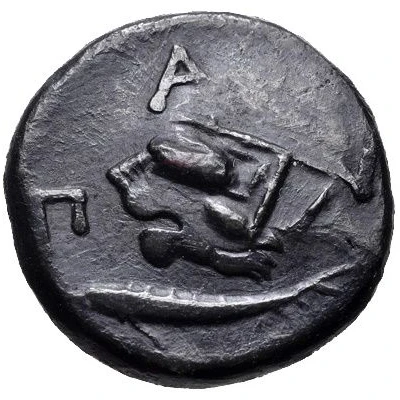

© Classical Numismatic Group, Inc.
Tetrachalkon Countermarked 275 BC - 265 BC
| Copper | 6.08 g | 19 mm |
| Issuer | Bosporan Kingdom (Bosporos) |
|---|---|
| Type | Standard circulation coin |
| Years | 275 BC - 265 BC |
| Value | Tetrachalkon (1⁄12) |
| Currency | Drachm |
| Composition | Copper |
| Weight | 6.08 g |
| Diameter | 19 mm |
| Shape | Round (irregular) |
| Technique | Hammered, Countermarked |
| Orientation | Variable alignment ↺ |
| Demonetized | Yes |
| Updated | 2024-10-10 |
| Numista | N#166878 |
|---|---|
| Rarity index | 89% |
Reverse
Lion head left, sturgeon below; gorytos (Scythian bow-case) countermark.
Script: Greek
Lettering: ПАN
Translation: Abbreviation of Panticapaeum (Pantikapaion) city
Comment
There are two main types of these coins, according to Anokhin (2011), which can be distinguished based on countermark.Anokhin (2011) type 1044 - overstrucked (and usually irregurarly positioned) countermarks.
Anokhin (2011) type 1045 - countermarks are cut in dies (vertically oriented).
Weight varies - 4.2-7.4 grams.
Diameter varies - 18-21 mm.
There are several different types of star countermark, which may have 9 to 16 rays.
There is a variation with the reverse position of the countermarks (the star is on the reverse).
Interesting fact
The Tetrachalkon (Countermarked) coin from the Bosporan Kingdom (Bosporos) is interesting because it features a unique countermark, which is a secondary marking or symbol that was added to the coin after it was minted. This countermark is believed to have been added by a merchant or trader to indicate that the coin had been verified as authentic and was accepted for trade. The use of countermarks on coins was a common practice in ancient times, but it is still a fascinating aspect of numismatics today.
